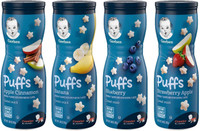Zen At Home: How To Choose The Perfect Fountain Decor For Your Space
There is something timeless about the sound of flowing water. A well-chosen fountain is not just décor; it is a piece of serenity. From picking the right size to blending tradition with style, this guide will help you choose the perfect fountain.
Here Is A Complete Guide On How To Choose The Perfect Fountain Decor For Your Home.
Imagine stepping into your living room after a long day in traffic, the horns still echoing in your ears. You sit down, switch off the fan, and what greets you? The gentle trickle of water flowing from a fountain in the corner. Instantly, the day's chaos seems less overwhelming. That's the magic of fountains – they're not just ornamental; they're emotional anchors.
In a world filled with constant notifications, buzzing phones, and endless to-do lists, a fountain brings back an element of simplicity. It's not about grandeur but about balance. The right fountain can become a part of your home's personality – a silent companion that never asks for much but gives you peace in return.
Choosing a fountain, however, can feel daunting. Should it be modern or traditional? Should it go in the living room or balcony? How big is too big? Discover tranquility at home by selecting fountain decor that harmonizes space, style, and relaxation for perfect zen-inspired ambiance. Let's break down the choices into simple, relatable steps so you can find the fountain that suits your home and your heart.

Achieve serene home vibes by picking the right fountain decor with mindful placement, soothing features, and effortless aesthetic harmony; Photo Credit: Pexels
1. Understanding The Energy Of Water In Your Space
Water has always been more than just an element; it carries symbolic weight. In many households, flowing water is associated with abundance, positivity, and calmness. Think of how people feel drawn to sit by a riverbank or a village well – the sound of water has always been a healer.
In urban homes, where concrete dominates and greenery is often limited to potted plants, a fountain fills that missing connection to nature. It's not only about beauty; it's about creating a current of energy. Flowing water suggests movement, and that can make a space feel alive.
When considering a fountain, think of where its energy would benefit you most. A small tabletop fountain in a study can ease mental clutter, while a corner fountain in the living room can lift the atmosphere for everyone. Remember, it's not just about placement but about allowing the water to “speak” in your space.
2. Choosing The Right Size For Harmony
A fountain should complement your space, not dominate it. The most common mistake people make is bringing home something too large for a modest living room or too tiny for a sprawling garden.
For apartments, a compact tabletop fountain or a sleek wall-mounted design works wonders. They bring charm without eating up floor space. On the other hand, if you're lucky enough to have a garden or terrace, you can afford something larger, like a cascading stone fountain or even a lotus-bowl design.
Think of it like clothing. A perfectly tailored kurta fits comfortably, while an oversized or undersized one makes you fidget all day. The same goes for fountains – the right size will blend effortlessly with your interiors. Before buying, measure the area, visualise the setup, and leave breathing space around it.
3. Materials That Make A Difference
The material of your fountain shapes both its look and feel. Stone fountains exude permanence and tradition; they remind you of temple courtyards and old havelis. Metal fountains, especially in brass or copper finishes, bring an antique charm and are easier to maintain. Fibreglass and ceramic ones are lighter, versatile, and perfect for modern apartments where weight might be a concern.
For those who love earthy aesthetics, terracotta fountains add warmth, while glass fountains create a contemporary, almost futuristic vibe. Each material carries its own personality.
Durability is also key. For outdoor spaces exposed to monsoons and scorching summers, stone and fibreglass handle the test of time better. Indoors, ceramic or metal pieces make a stylish yet sturdy choice. In the end, your material should match not only your décor but also your lifestyle – no one wants a fragile piece that cracks after the first summer.
Also Read: Brighten Your Study Space: Top Study Lamps Under ₹500 For Daily Use
4. Balancing Tradition With Modern Style
Modern décor often celebrates sleek lines, minimalism, and neutral colours, while traditional design celebrates intricate carvings, earthy tones, and cultural motifs. The beauty of fountain décor is that it allows you to blend both worlds.
A simple black granite fountain with subtle carvings can suit a home where modern meets heritage. For a more experimental look, consider a brass urli-style fountain filled with floating flowers and candles – perfect for festivals and family gatherings. On the other hand, a stainless-steel sheet waterfall fountain might be the statement piece that transforms your contemporary living room.
Think of your fountain as a cultural handshake – one hand in the past, the other reaching toward the present. It should tell a story about your home without shouting for attention.
5. Placement Matters More Than You Think
Where you keep a fountain often matters as much as the design itself. Placing one in a dark corner may make it look gloomy, while positioning it by a window allows natural light to highlight the water's sparkle.
In living rooms, corners often work best, letting the fountain act as a soft anchor without blocking movement. In balconies or gardens, central placements create a focal point that draws the eye. Some prefer placing smaller fountains in bedrooms, but here it's better to choose subtle designs – nothing too noisy that interrupts sleep.
Practicality also counts. Fountains need power for pumps, so proximity to a socket is important. And of course, easy access for cleaning saves a lot of future frustration.
6. Sound: The Heartbeat Of A Fountain
Every fountain has its own “voice.” Some produce a gentle trickle that's barely audible, while others create a stronger gush that fills the room. Choosing the right sound is deeply personal.
If your home is already filled with daily sounds – children studying, the television running, utensils clanging in the kitchen – then a soft, whisper-like fountain is best. But if your space tends to be quiet, a slightly more prominent flow can energise it without becoming disruptive.
Picture this: sipping tea on your balcony at dawn, hearing only the faint splash of water. Or entertaining guests where the fountain subtly masks the distant honking outside. A fountain's sound should never irritate; it should blend into the rhythm of your home like background music that never demands but always enhances.
7. Lighting: Adding Drama And Depth
Lighting can turn a simple fountain into a mesmerising experience. Imagine a fountain at night, its water shimmering under soft LED lights. Suddenly, it's not just décor – it's theatre.
For indoor fountains, warm yellow lights create a cosy mood, while white or coloured LEDs can make outdoor fountains come alive during evenings. Some designs even integrate lighting within the water flow, making the stream look magical.
However, subtlety is key. Over-lighting can make the setup look artificial, almost like a showroom display. The aim is to enhance, not overwhelm. A small spotlight or hidden LED is often enough to transform the atmosphere. Plus, energy-efficient lights ensure the spectacle doesn't come with a shocking electricity bill at the end of the month.
8. Maintenance: The Less Glamorous But Essential Part
As charming as fountains are, they need care. Stagnant water can collect dust, grow algae, or even attract mosquitoes. Regular cleaning, changing the water, and occasionally checking the pump ensure the fountain remains a joy rather than a burden.
The good news is that most modern fountains are designed with ease in mind. Removable basins, lightweight structures, and simple pump systems mean you don't need a handyman every time something clogs. Adding a little anti-algae solution or even a splash of vinegar in the water helps keep it fresh.
Think of maintenance as part of the bonding process. Just as you'd dust your favourite shelf or water your plants, tending to a fountain becomes a small ritual. And the reward is immense – crystal-clear water, soothing sound, and a décor piece that looks alive all year round.
9. Budgeting Without Compromising Beauty
Fountains come in every price range – from small tabletop pieces at ₹1,500 to elaborate garden structures costing lakhs. The trick is not to stretch beyond comfort but to balance budget with charm.
If the goal is simply to introduce flowing water indoors, a modest tabletop design will do the trick. For those willing to invest more, custom stone or metal fountains can become heirloom-worthy pieces.
Always factor in not just the buying price but also maintenance costs – electricity for the pump, cleaning supplies, and occasional repairs. A fountain should feel like a treat, not a burden. With a little patience and research, there's always an option that suits both your wallet and your aesthetic.
10. Adding Personal Touches To Make It Yours
A fountain becomes truly special when it reflects your personality. Add floating diyas during Diwali, fresh flowers during pujas, or pebbles and crystals that carry personal meaning. Some even place tiny figurines or plants around their fountains to make them feel alive and connected.
These little touches make the fountain more than just a store-bought item. They transform it into a living corner of the home, one that adapts to seasons, moods, and occasions.
Over time, you'll notice that guests pause by the fountain, children linger near it, and you yourself gravitate towards it after a tiring day. That's when you know it's not just décor – it has become a quiet witness to your home's stories.
Products Related To This Article
1. THE ARTMENT Brown Mystic Canopy Rainforest Resin Fountain
2. THE ARTMENT Black & Copper Toned Leaf Design Emerald Metal Fountains
3. Home Centre Golden & Black Polyresin Buddha Indoor Fountain
4. THE ARTMENT Brown & Black Zen Garden Column Resin Fountain
5. Ekhasa Black Cupid Angel Ceramic Incense Backflow Smoke Fountain with LED Lights
6. Brahmz Black Ceramic Smoke Backflow Fountains With Incense Cones
7. Ekhasa Brown Ceramic Dhoop Dhani Back Flow Smoke Fountain
Fountains are not about extravagance; they're about balance. The sound of water softens sharp edges, the sparkle of flow uplifts moods, and the presence of nature in your home reminds you to slow down.
Whether it's a small tabletop piece on your study desk or a grand garden installation, the perfect fountain is the one that feels like it belongs. It's not about copying a catalogue look but about choosing with care – size, material, placement, sound, and, most importantly, how it makes you feel.
In the end, a fountain is more than decoration. It's an invitation – to breathe, to pause, and to find your own pocket of zen right at home. Shop now on Myntra.













![Steam Iron Teflon Shoe Cover for ES-300,ST-96 [Only For ES-300 and ST-96 Model Electric Steam Irons]](https://m.media-amazon.com/images/I/51wwkttondL._SL160_.jpg)